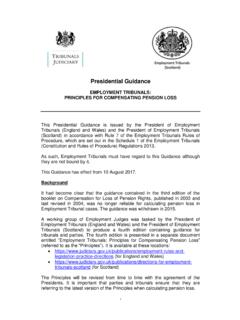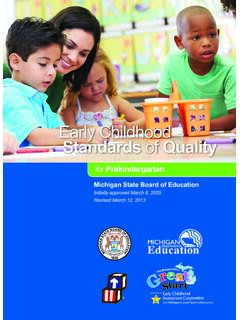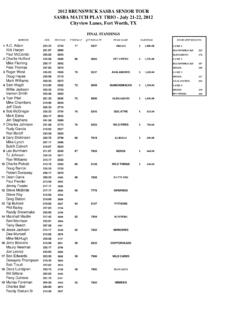Transcription of The Crown Court Compendium …………………………….. Part …
1 December 2020 Originally written by: Maddison Ormerod Tonking Wait Edited by: Picton Ormerod Tayton Shetty Cooper Aubrey dickinson Smith McGowan Thomas Quirk The Crown Court Compendium .. part I: Jury and Trial Management and Summing Up Crown Court Compendium part I December 2020 Judicial College ii Introduction (December 2020) The first version of this Compendium was published in May 2016. That version was written by Sir David Maddison, His Honour Simon Tonking and His Honour John Wait and Professor David Ormerod QC. This version amends and develops that first version.
2 It has been edited by: HHJ Martin Picton (lead editor) Professor David Ormerod QC (Hon), HHJ Lynn Tayton QC, HHJ Rajeev Shetty and HHJ Jonathan Cooper (principal editors). Mrs Justice McGowan, HHJ David Aubrey QC, HHJ greg dickinson QC, Recorder Andrew Smith QC, Professor Cheryl Thomas QC (Hon) and Dr Hannah Quirk (assistant editors). HHJ Andrew Hatton, who was responsible for appointing the editorial team, is involved in overseeing the process of maintenance undertaken by the editorial board as well as contributing to the work. This December 2020 revision of Parts I and II of the Compendium continues the work of updating and improvement.
3 The work of the Court of Appeal has continued throughout the Covid crisis and so has that of the editorial team. The most significant legislative change since the last edition has been the introduction of a Sentencing Code by way of the Sentencing Act 2020. We are very grateful to Lord Justice Holroyde, the Chairman of the Sentencing Council, for the foreword that he has written addressing that and some other important sentencing issues. Although the focus of the foreword is on sentencing we have included it in part I as well to ensure that it comes to the attention of all users of the Compendium . In addition to the new cases highlighted below there are at least three judgments from the Court of Appeal, two of which are currently subject to reporting restrictions, reminding judges to be scrupulous in avoiding descending into the arena or giving any appearance of so As it was put in one of them.
4 An appearance of advocacy on behalf of the prosecution is never appropriate. No Judge should appear to enter into the arena. They should be seen to remain the impartial arbiter throughout. That is the essence of being a Judge. In terms of new material, the following merit highlighting: The addition of Bermingham2 in section 2-1 and Appendix II on the use of jury questionnaires and what should be done with them after the jury is sworn. The addition of Gabriel3 in section 2-4 which provides guidance where there is an apparent jury irregularity; 1 Mustafa [2020] EWCA Crim 1723 2 [2020] EWCA Crim 1662 and in particular paragraphs 61 and 62.
5 3 [2020] EWCA Crim 998 Crown Court Compendium part I December 2020 Judicial College iii The addition of Thomas4 in section 3-2 on fitness to plead and section 3-7 on intermediaries; The addition of Ali v DPP5 and Bogdanovic6 in section 5 on burden and standard of proof; The addition of Greenwell7 in section 6-2 on specimen counts; The addition of Johnson8 and Bermingham9 in section 7-7 on conspiracies along with some significant reworking of the examples generally; The addition of Bermingham10 in section 8-6 on dishonesty along with some reworking of the examples and routes to verdict in that section; The addition of Bassett11 in section 10-1 on circumstantial evidence and Townsend12 in 10-3 on the admissibility of expert evidence as to age and Hewitt13 in 10-4 on delay; The addition of Gabanna14 in section 12-1, 12-2 and 12-6 addressing the standard of proof where bad character evidence falls to be considered and providing some guidance as to how Mitchell15 should be interpreted.
6 The addition of Cleere16 in section 12-8 dealing with when a defendant s creation of a false impression properly triggers the admission of bad character material. The addition of Yaryare17 in section 12-9 dealing with when a defendant s attack on the character of a person will trigger (1)(g). The addition of Boxall18 in section 12-10 which discusses the proper approach where the prosecution seek to introduce non-defendant bad character evidence; The addition of Barnes19 in section 14-2 on the admission of hearsay evidence where a witness was alleged to have been kept away due to fear. The addition of KH v R20 in section 14-9 and section 14-12 dealing with the admission of a previous statement of complaint to rebut an allegation of recent fabrication.
7 4 [2020] EWCA Crim 117 5 [2020] EWHC 2844 (Admin) 6 [2020] EWCA Crim 1229 7 [2020] EWCA Crim 1395 8 [2020] EWCA Crim 482 9 [2020] EWCA Crim 1662 10 [2020] EWCA Crim 1662 11 [2020] EWCA Crim 1376 12 [2020] EWCA Crim 1343 13 [2020] EWCA Crim 1247 14 [2020] EWCA Crim 1473 15 [2016] UKSC 55 16 [2020] EWCA Crim 1360 17 [2020] EWCA Crim 1314 18 [2020] EWCA Crim 688 19 [2020] EWCA Crim 959 20 [2020] EWCA Crim 136 Crown Court Compendium part I December 2020 Judicial College iv The addition of Crampton21 in section 15-1 dealing with an identification made from Facebook.
8 The addition of Jones22 and Killick23 in section 15-8 dealing with identification by DNA recovered from a moveable object. The addition of Dybicz24 in section 17-1 addressing how a jury should be directed on silence in interview; The addition of DPP v M25 in section 18-6 dealing with the admissibility of a conclusive grounds decision as being potentially supportive of the defence. The addition of Broughton26 in section 19-3 on causation; The addition of Hepburn27 in section 20-1 on the extent to which judges should be required to give directions about matters that are not strictly legal matters. The addition of Lawrance28 in section 20-4 on deception and consent.
9 In addition, the example directions have been reviewed for readability and in places revised; The addition of Adebayo29 in section 21-3 dealing with potential jury irregularities. The next revision is scheduled to be published in July 2021. HHJ Martin Picton 17th December 2020 21 [2020] EWCA Crim 1334 22 [2020] EWCA Crim 1021 23 [2020] EWCA Crim 785 24 [2020] EWCA Crim 1047 25 [2020] EWHC 3422 (Admin) 26 [2020] EWCA Crim 1093 27 [2020] EWCA Crim 820 28 [2020] EWCA Crim 971 29 [2020] EWCA Crim 1178 Crown Court Compendium part I December 2020 Judicial College v Foreword (to the December 2020 edition) by Lord Justice Holroyde, Chairman of the Sentencing Council I am told by the editors that part II of this Compendium has not previously had its own foreword.
10 I am therefore particularly pleased to have been asked, as Chairman of the Sentencing Council, to provide a foreword for this latest revision. It gives me the opportunity, which I gladly take, to welcome the Sentencing Code. The outstanding work and stamina - of the Criminal Law team at the Law Commission, under the leadership of David Ormerod, has led to legislation which will simplify and clarify sentencing procedure and will help make sentencing more transparent to the public. Sentencing is a matter of constant, and increasing, public concern, and the Code will benefit us all by making the procedural law more accessible and easier to follow.














